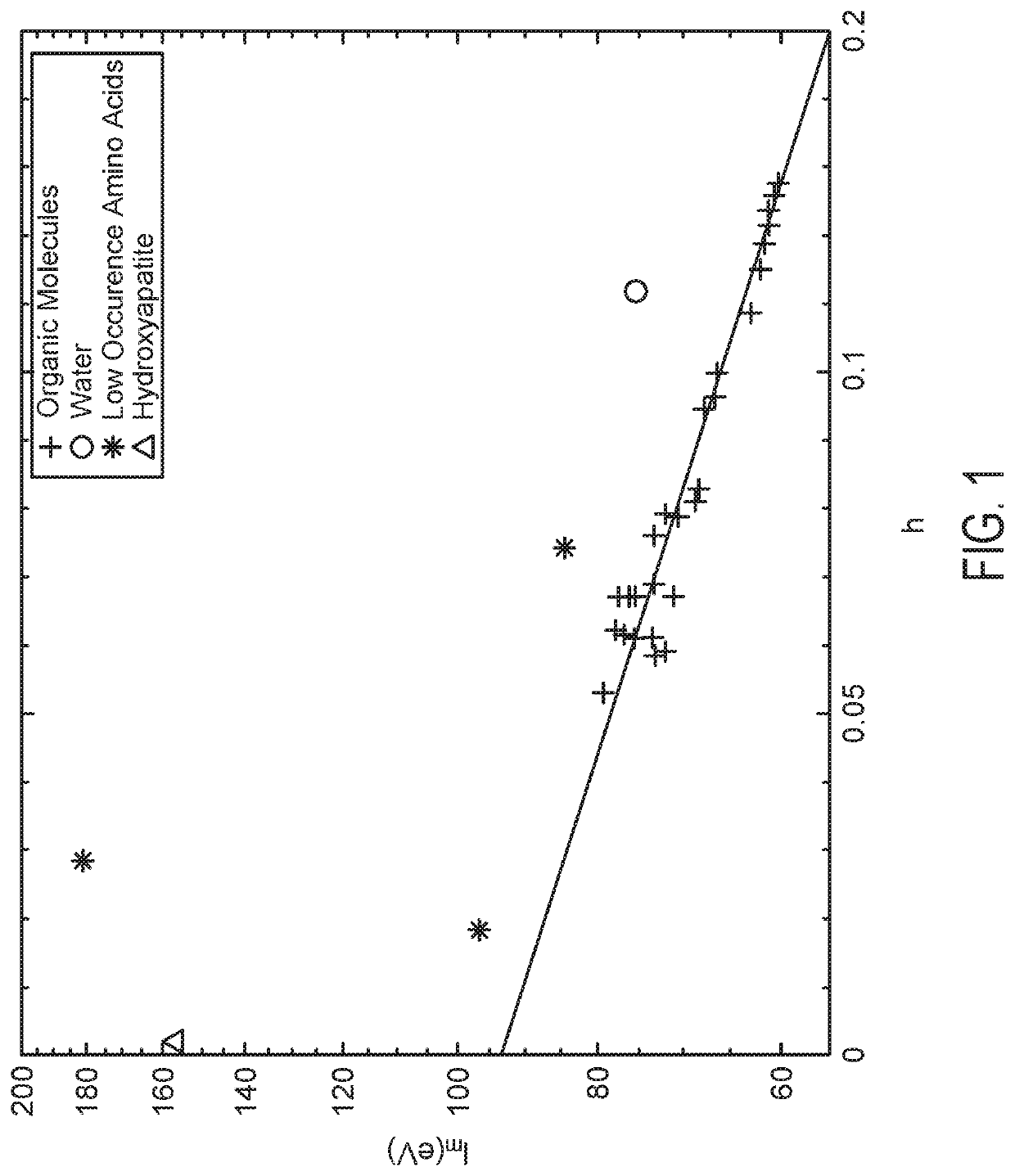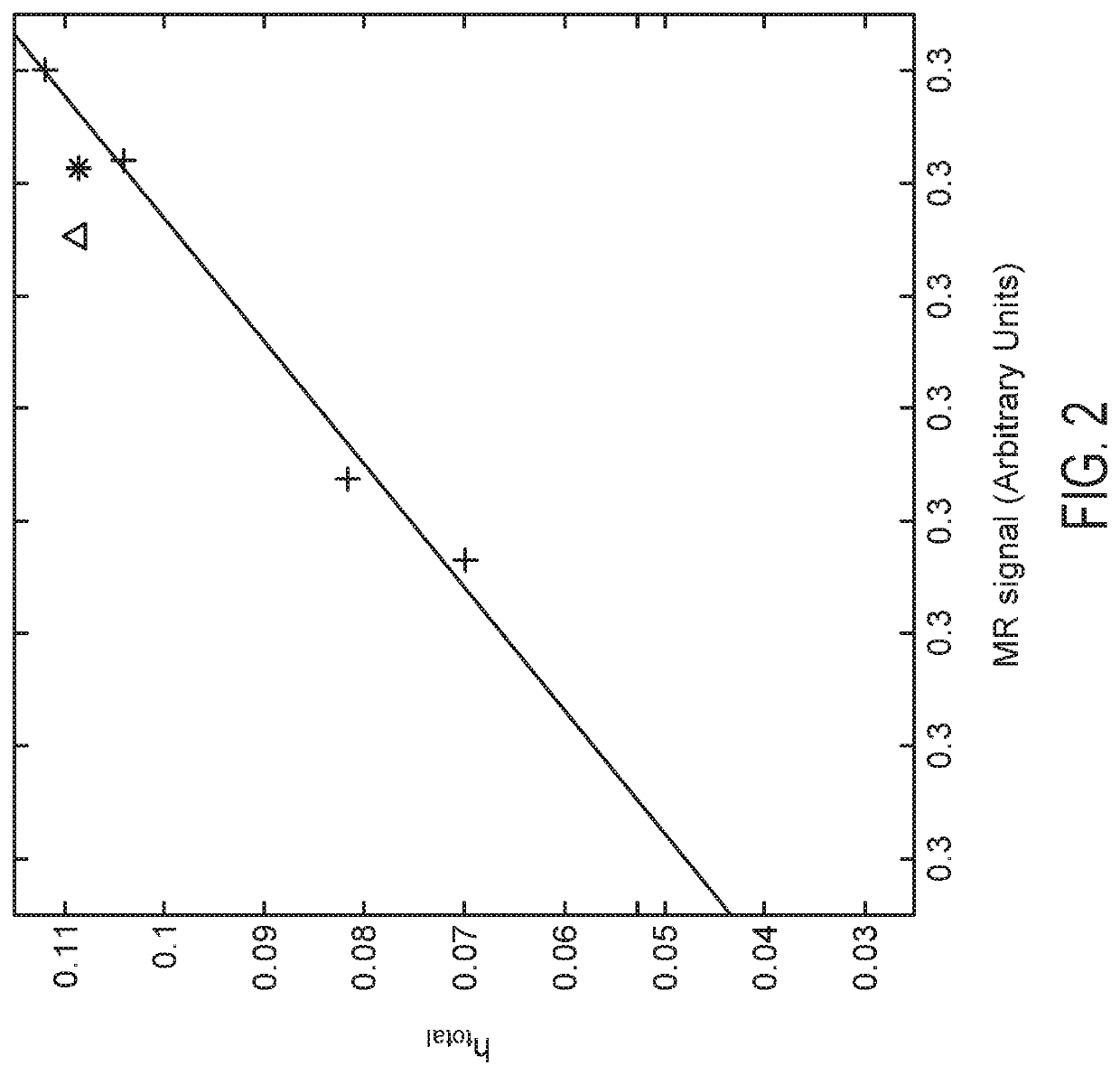Determination of Tissue Properties for Charged Particle Radiotherapy
a tissue property and radiotherapy technology, applied in the field of tissue properties determination of charged particle radiotherapy, can solve the problems of high heterogeneity of tissues, high error rate of current methods for determining spr, and substantial variability between individuals in tissue composition
- Summary
- Abstract
- Description
- Claims
- Application Information
AI Technical Summary
Benefits of technology
Problems solved by technology
Method used
Image
Examples
example 1
tion of Mean Ionization Potential Using Magnetic Resonance Imaging
[0051]Materials and methods. The Unified Compositions (UC) model. In the unified compositions (UC) model, it is assume that human biological tissues can be segmented into three general components: water (hydrogenous), organic (hydrogenous) and mineralized tissues (calcium / phosphorous rich). In this model, it was determined the mean ionization potential, Im, of molecules by the Bragg additivity rule (BAR) of elemental constituents by Equation 1.
[0052]The majority of tissues in humans are composed of five major types of molecules: water, lipids, carbohydrates, proteins, and minerals / hydroxyapatite with the exact proportions dependent on the particular tissue / organ. Five-component models of molecules in the human body have been used previously in the study of the human body and are assumed, in this study, to be sufficient to accurately calculate the mean ionization potential for naturally occurring biological tissues. Fr...
PUM
 Login to View More
Login to View More Abstract
Description
Claims
Application Information
 Login to View More
Login to View More - R&D
- Intellectual Property
- Life Sciences
- Materials
- Tech Scout
- Unparalleled Data Quality
- Higher Quality Content
- 60% Fewer Hallucinations
Browse by: Latest US Patents, China's latest patents, Technical Efficacy Thesaurus, Application Domain, Technology Topic, Popular Technical Reports.
© 2025 PatSnap. All rights reserved.Legal|Privacy policy|Modern Slavery Act Transparency Statement|Sitemap|About US| Contact US: help@patsnap.com


